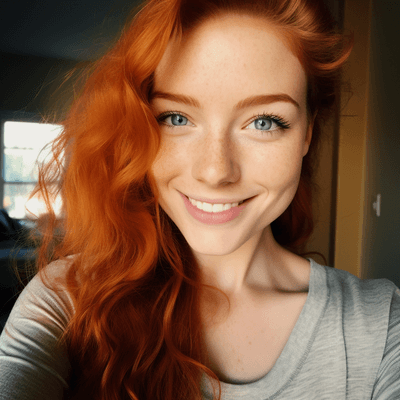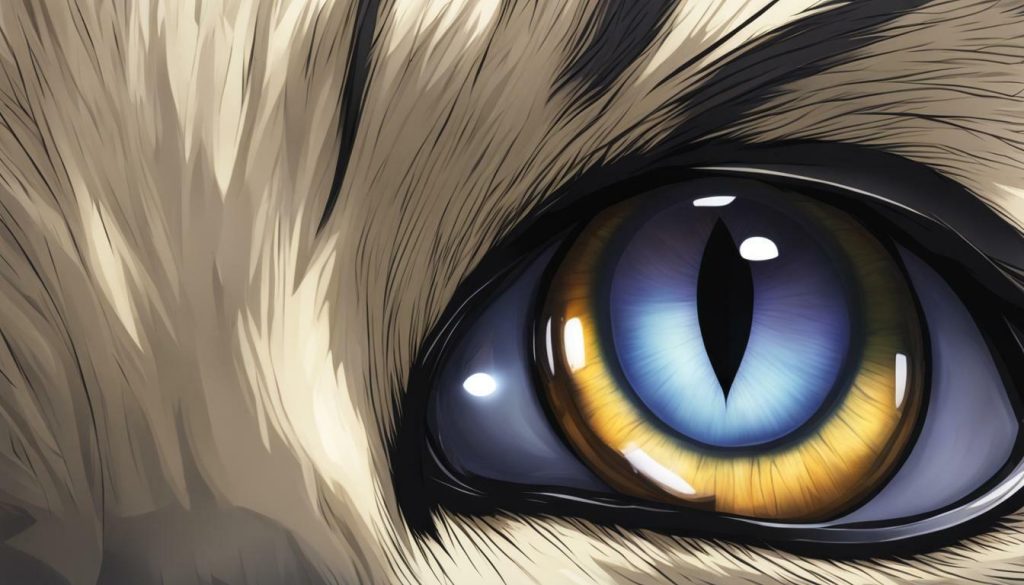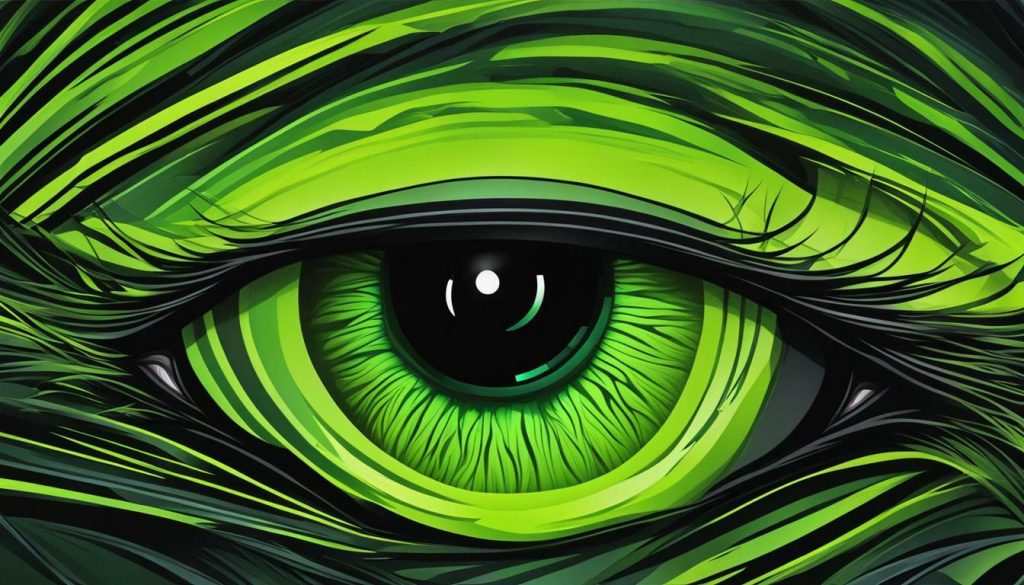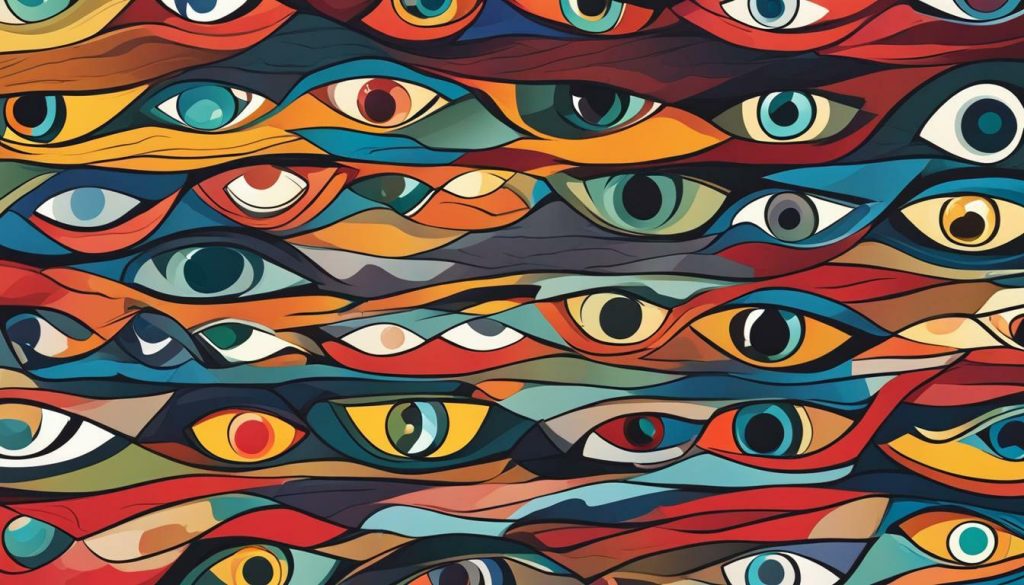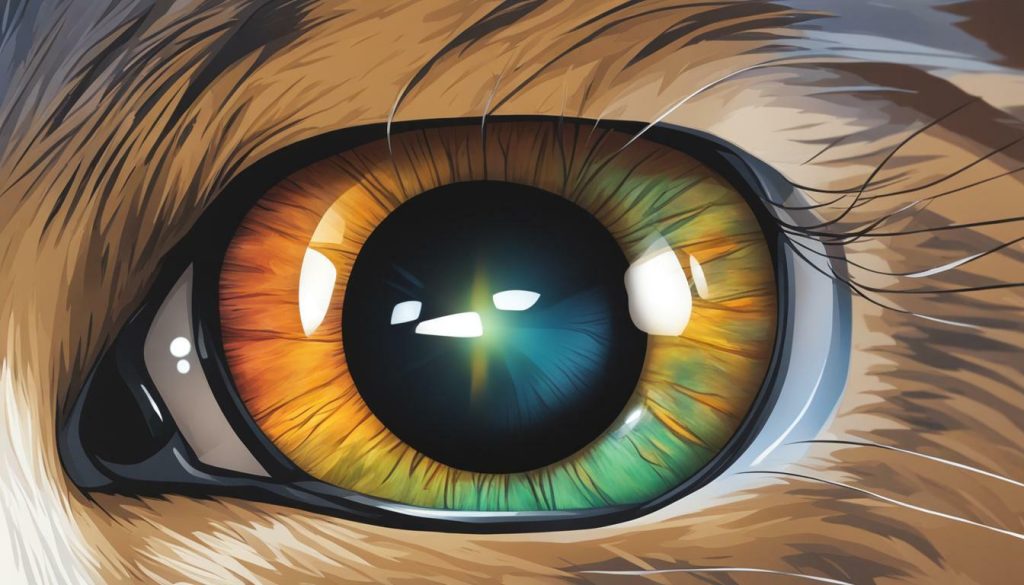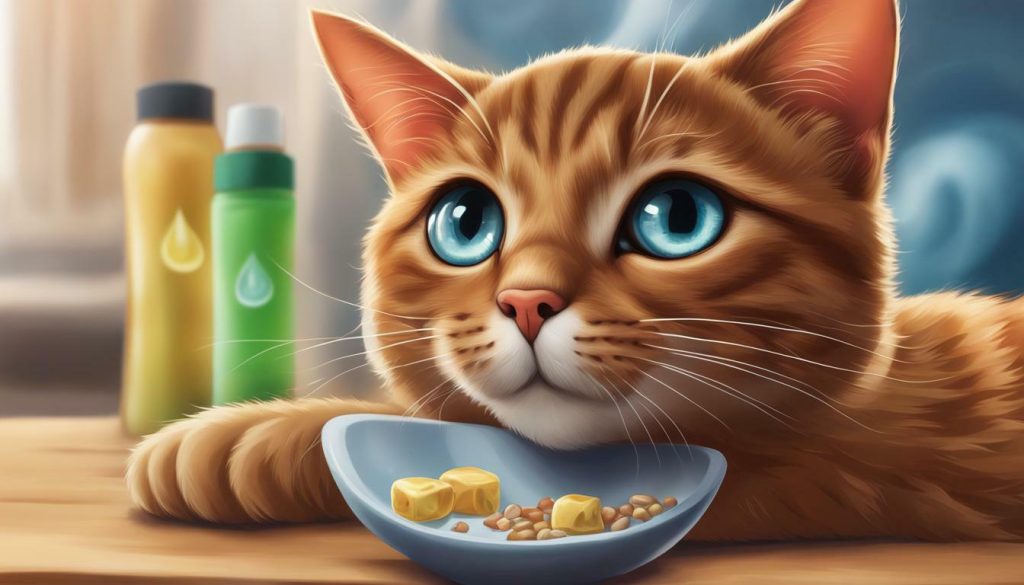As a cat owner, you may have noticed that your feline friend’s pupils seem to be perpetually dilated, regardless of the lighting conditions. While dilated pupils can look strikingly beautiful, it’s essential to understand that they can also be indicative of underlying health concerns that require attention. In this article, we will explore the main causes behind cat eye dilation and provide insights into feline eye health.
- 1 Key Takeaways:
- 2 The Normal Function of Cat’s Pupils
- 3 Common Causes of Dilated Pupils in Cats
- 4 Other Symptoms to Look Out For
- 5 When to Consult a Vet
- 6 Diagnosing and Treating Eye Conditions
- 7 Tips for Promoting Good Eye Health in Cats
- 8 Conclusion
-
9
FAQ
- 9.1 Q: Why are my cat’s eyes always dilated?
- 9.2 Q: What is the normal function of a cat’s pupils?
- 9.3 Q: What are the common causes of dilated pupils in cats?
- 9.4 Q: What other symptoms should I look out for?
- 9.5 Q: When should I consult a vet?
- 9.6 Q: How are eye conditions in cats diagnosed and treated?
- 9.7 Q: How can I promote good eye health in my cat?
- 9.8 Q: What should I take away from this information?
Key Takeaways:
- Dilated pupils can indicate underlying health concerns in cats.
- Feline eye health is crucial for your cat’s overall well-being.
- Understanding the normal function of a cat’s pupils is essential in determining eye health.
- Several factors can lead to pupil dilation in cats, including underlying eye conditions or diseases.
- Knowing when to consult a vet about your cat’s eye health is crucial.
The Normal Function of Cat’s Pupils
Before delving into the reasons behind your cat’s dilated pupils, it’s important to understand the normal function of a feline’s eyes. A cat’s pupil size is controlled by muscles in the iris, which react to changes in the light levels in their environment. In bright light, the pupil constricts or gets smaller, and in low light, it dilates or gets larger.
Cats also have a unique ability to dilate their pupils quickly and dramatically, allowing them to adapt to changes in light quickly. This helps them to see more effectively in low light conditions, such as hunting in the dark.
However, various factors can lead to prolonged pupil dilation, indicating potential underlying issues with your cat’s eye health. These factors include medications, stress, fear, and excitement, as well as certain eye conditions like glaucoma and uveitis.
The Normal Function of Cat’s Pupils.
It’s important to note that dilated pupils alone may not always indicate a problem, but monitoring your cat’s eyes and noticing any changes or additional symptoms is critical in identifying and addressing potential issues.
Common Causes of Dilated Pupils in Cats
There are various reasons why a cat’s pupils may remain dilated. In this section, we will explore common causes of dilated pupils in cats, including underlying eye conditions or diseases that may be the root cause.
Cat Eye Conditions: A cat’s dilated pupils may be a symptom of an underlying eye condition such as glaucoma, uveitis, or retinal disease. Glaucoma occurs when there is an increase in pressure within the eye, leading to vision loss. Uveitis is an inflammation of the inner eye that can cause redness, pain, and sensitivity to light. Retinal disease affects the light-sensitive tissue at the back of the eye, leading to vision loss and dilated pupils.
Head Trauma: If your cat experiences head trauma, it may cause pupil dilation due to damage to the nerves that control the size of the pupils.
Diseases: Certain diseases like hypertension, hyperthyroidism, or neurological conditions, can cause dilated pupils in cats.
Stress or Fear: Cats may also experience dilated pupils when they are stressed or frightened. This is due to a natural “fight or flight” response that causes the pupils to dilate to let in more light, allowing them to better perceive their surroundings.
It’s important to note that these are not the only potential causes of dilated pupils in cats, and it’s always best to consult a veterinarian if you notice consistently dilated pupils in your feline friend.
Other Symptoms to Look Out For
Dilated pupils are not always the only sign of a potential issue with your cat’s eye health. Therefore, it is essential to keep an eye out for other symptoms that may be related.
Some of the common signs that may indicate a problem with your cat’s eyes include excessive tearing, cloudiness or redness of the eyes, eye discharge, squinting, and pawing at the eyes. Your cat may also appear to be more sensitive to light than usual or exhibit behavioral changes such as avoiding bright light or darker areas.
If you notice any of these symptoms in combination with dilated pupils, it is critical to seek professional advice from your veterinarian.
While dilated pupils may not always be a cause for worry, it is crucial to stay vigilant and keep an eye out for any related symptoms. Early detection and proper treatment can significantly improve your cat’s eye health and overall wellbeing.
When to Consult a Vet
As a loving cat owner, it’s crucial to monitor your feline friend’s health regularly and be aware of any symptoms that may indicate an underlying issue. With regards to cat eye health, dilated pupils can be a sign of various eye problems or diseases, including glaucoma, trauma, or neurological disorders.
If you notice your cat’s pupils remain dilated for an extended period, it’s recommended to seek professional veterinary advice. Other symptoms to watch out for include cloudy or red eyes, discharge, tearing, or squinting. It’s important to note that some eye conditions may also cause your cat discomfort or pain, leading to behavioral changes like increased aggression or lethargy.
Veterinarians are specially trained to identify and diagnose cat eye diseases accurately. They can conduct various tests and physical exams to determine the root cause of your cat’s dilated pupils and recommend suitable treatment or management strategies. Early detection and treatment of eye conditions are crucial in maintaining your cat’s vision and overall well-being.
Remember, it’s always better to be safe than sorry when it comes to your cat’s health. Don’t hesitate to consult a vet if you have any concerns. They are the best source of guidance and support for all your cat’s eye health needs.
Diagnosing and Treating Eye Conditions
When it comes to diagnosing and treating eye conditions in cats, there are several options available depending on the underlying issue. If your cat has consistently dilated pupils, I highly recommend consulting with a veterinarian to determine the root cause of the problem.
Cat eye conditions and disorders can range from minor irritation to severe infections or injuries. Some common eye conditions in cats include cataracts, glaucoma, and uveitis. A veterinarian can perform a comprehensive eye exam to diagnose the issue and recommend the appropriate course of treatment.
Treatment options may include prescription medication, eye drops, or surgery. In some cases, managing the underlying condition may be necessary to help control the dilated pupils. It’s important to follow your veterinarian’s recommendations carefully and maintain regular check-ups to monitor your cat’s progress.
In addition to treatment, there are also management strategies that can help improve your cat’s eye health, such as keeping their environment clean and free of potential irritants, providing a healthy diet, and monitoring for any changes in behavior or symptoms. By staying proactive about your cat’s eye health, you can help minimize the risk of future eye conditions and ensure your feline friend stays happy and healthy.
If you suspect your cat has an eye condition or disorder, contact a veterinarian as soon as possible. Remember, early detection and treatment can make all the difference in your cat’s eye health.
Tips for Promoting Good Eye Health in Cats
As a cat owner, you play a vital role in maintaining your feline friend’s eye health. Here are some tips to promote good eye health in cats:
- Take your cat for regular veterinary check-ups to detect and address any potential eye problems early on.
- Keep your cat’s environment clean and free from potential eye irritants such as dust or smoke.
- Ensure your cat has a balanced diet that includes essential vitamins and nutrients like vitamin A.
- Regularly groom your cat to keep their face and eyes clean. This can help prevent eye infections.
- Protect your cat’s eyes from bright sunlight or UV rays by keeping them indoors during the day, or providing them with a shaded area outside.
By following these tips, you can help prevent potential eye problems and keep your cat’s eyes healthy. Remember, if you notice anything unusual about your cat’s eyes or behavior, consult with your veterinarian immediately.
Conclusion
In conclusion, I hope this article has provided you with valuable insights into why your cat’s eyes may be consistently dilated, and how you can promote good eye health in your feline companion. As a responsible pet owner, it’s crucial to prioritize regular veterinary check-ups and monitoring for symptoms that may indicate an underlying eye condition or disease. Remember, prevention is always better than cure, and by providing a safe environment for your cat to thrive and following the tips and guidelines outlined in this article, you can help ensure their eyes remain healthy.
Thank you for reading, and I wish you and your furry friend all the best.
FAQ
Q: Why are my cat’s eyes always dilated?
A: There can be various reasons why your cat’s eyes are consistently dilated. It could be a sign of normal pupil function, or it could indicate an underlying eye condition or disease. It’s important to understand the possible causes and monitor for other symptoms.
Q: What is the normal function of a cat’s pupils?
A: Cats have a unique ability to control the size of their pupils, which helps regulate the amount of light entering their eyes. Pupil dilation occurs in response to changes in lighting conditions or emotional arousal. Understanding this normal function is crucial in determining whether dilated pupils are an issue.
Q: What are the common causes of dilated pupils in cats?
A: Dilated pupils in cats can be caused by several factors, such as low light conditions, fear or stress, certain medications, or underlying eye conditions like glaucoma or uveitis. Identifying the underlying cause is essential for proper treatment and management.
Q: What other symptoms should I look out for?
A: While dilated pupils alone may not always indicate a serious problem, there are other symptoms you should watch for. These may include redness or inflammation, squinting, excessive tearing, eye discharge, or changes in behavior. Consulting a vet is advisable if you notice these additional symptoms.
Q: When should I consult a vet?
A: It’s important to consult a vet if your cat’s pupils are consistently dilated or if you observe any concerning symptoms. They will be able to perform a thorough examination and provide guidance on whether further investigation or treatment is necessary for your cat’s eye health.
Q: How are eye conditions in cats diagnosed and treated?
A: Diagnosing eye conditions in cats typically involves a comprehensive eye examination, which may include visual inspection, blood tests, or imaging techniques. Treatment options may vary based on the specific condition, but they can include medications, surgeries, or other interventions to manage the underlying cause.
Q: How can I promote good eye health in my cat?
A: Preventing eye problems in cats starts with regular veterinary check-ups and maintaining a safe and clean environment. Additionally, providing a balanced diet, avoiding exposure to irritants, and monitoring for any changes in eye appearance or behavior can help promote good eye health in your feline friend.
Q: What should I take away from this information?
A: Understanding why your cat’s eyes are always dilated is crucial for their overall health and well-being. By staying informed about the possible causes, monitoring for symptoms, and seeking professional help when needed, you can ensure your cat’s eyes remain healthy and address any underlying issues promptly.

